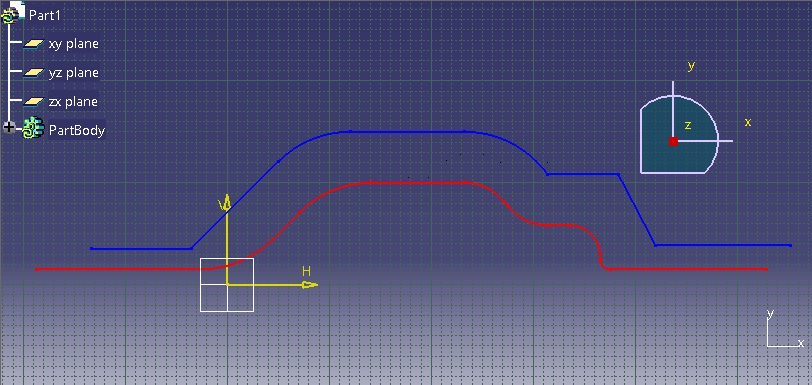Importing Axisymmetric mandrel data from a DXF file.
 Cadfil Help contents
Cadfil Help contents  Cadfil.com Home
Cadfil.com Home
On the Cadfil Utilities menu there is an Imported DXF option. This reads a DXF file created in a CAD program and creates a mandrel file. For this to work the DXF file must be prepared in a certain way as described below.
The Mandrel data is defined by a 2D profile (long section) in the X,Y plane (Z=0) using lines and circular arcs, The rotation axis of the mandrel should be the World X axis. The Lines and arcs for the mandrel must be joined to form a polyline or lwpolyline, in AutoCAD a closed contour (PolyLine) is created using the Pedit (PE) command.
This polyline must be on a layer called MAN and this layer should contain only one polyline but can contain other data. Only the polyline is imported. The Envelope data (optional) must be prepared in the same way as the mandrel contour but the polyline must be on a layer called ENV. In summary the only entities imported are Polyline contours for the mandrel on Layer "MAN" and for the envelope on layer "ENV"
In the CadfilXXX\Data folder there is a sample DXF file called TESTMAN.DXF. The results of this sample file are shown in the pictures below. Cadfil has been tested on AutoCAD R12, R13, R14 & 2000 and 2008 DXF files.


There is also a facility to import a cross section for the Cadfil Spar winding for non-round prismatic profiles. This is discussed under spar winding.